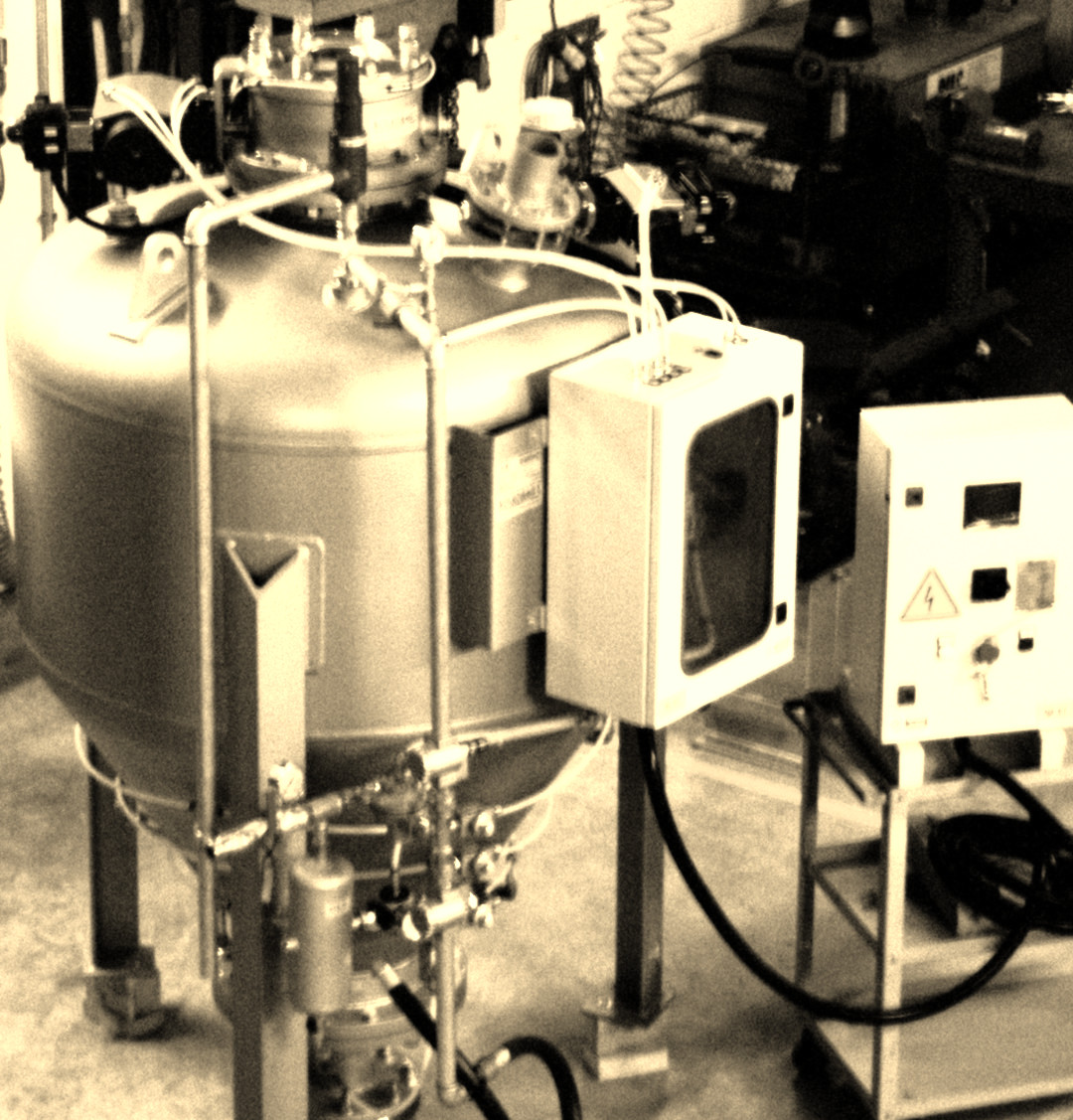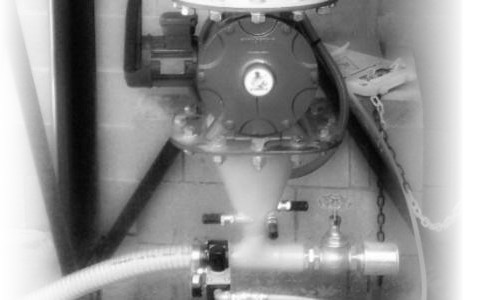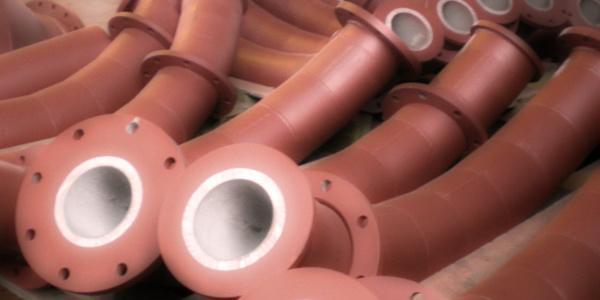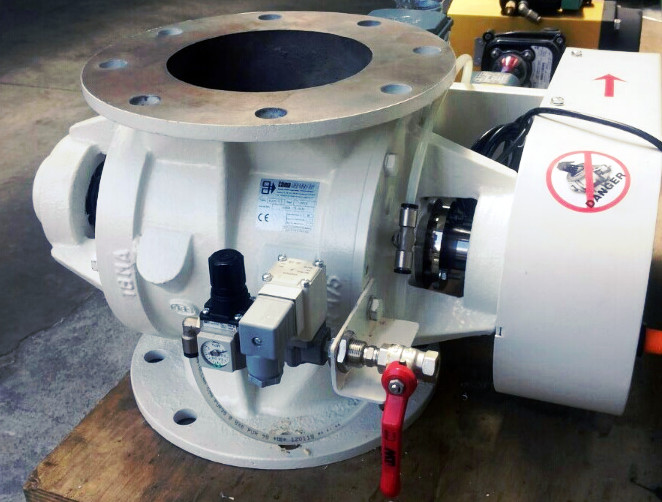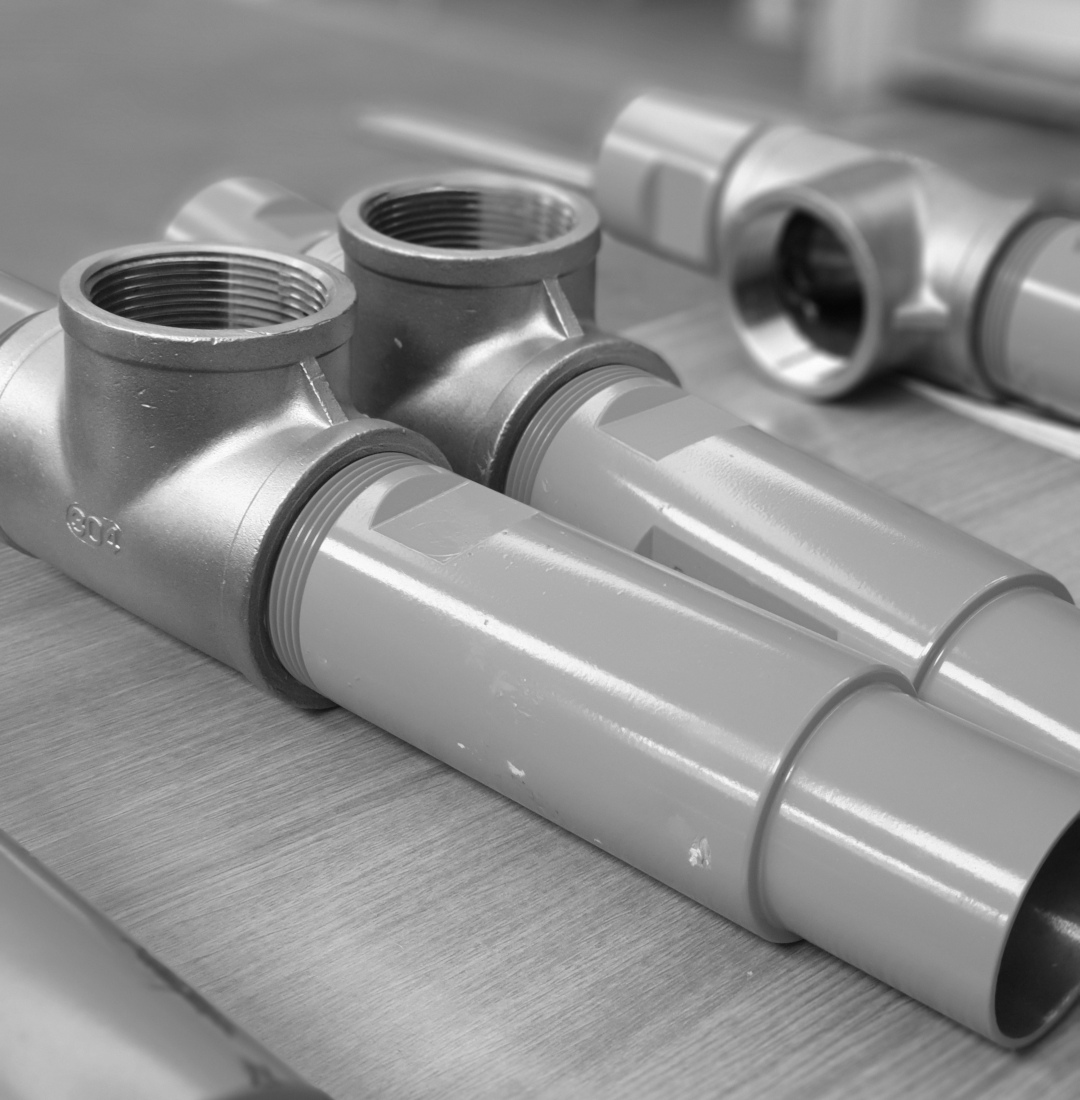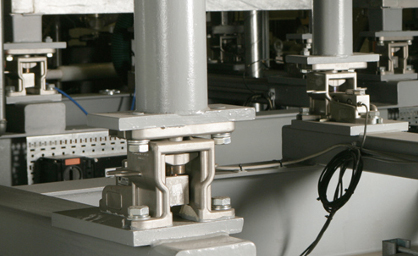The V-PACK family is proposed by Rosada ILS as the main component of dense phase pneumatic suction systems.
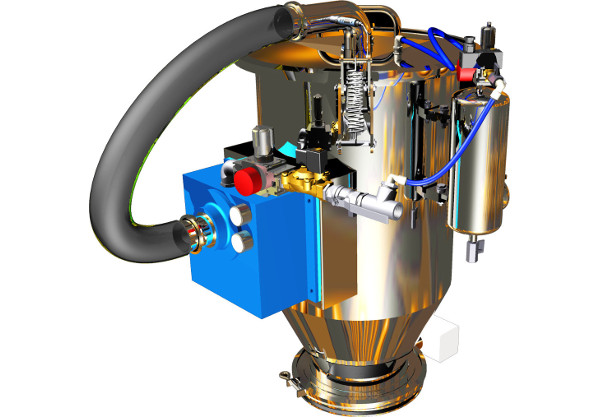
The basis of the project is composed of a tank, volume usually not exceeding 100 litres, fitted with an inlet for the suction of the material and of a cleaning system of the fluid to be returned to the environment, with compressed air washing in counter current.
This starting point allows to formulate the most varied solutions to meet the needs of the pneumatic conveying, but the strength of the V-PACK is the conveying with very high degrees of vacuum.
The principle of operation of the system is extremely simple. The degree of vacuum can be made either with electric pumps or with pneumatic multi-Venturi pumps powered by the compressed air network. Once the conveying fluid is launched at steady state, the material is sucked through the pipeline, up to the tank V-PACK itself. The latter is equipped with a suction inlet placed so as to allow the material to fall by gravity towards the discharge point, while the the suction fluid passes through filter media and then is reintroduced into the atmosphere. The filters cleaning system is the type with compressed air, controlled by a suitable control panel.
Among the peculiarities of the V-PACK, we highlight the easy maintenance and cleaning. To be able to disassemble and reassemble the filters, ypu just loosen the collar tightening the cover and turn it to open, without having to remove it and lay on the ground as with conventional equipment. This allows the operator to work hands free, to perform maintenance without removing the electrical connections and compressed air as well as work in conditions of reduced range of movement. Once repositioned the filters, simply you turn the lid to close and re-tighten the collar.
A new result of versatility and reliability resulting from Rosada ILS research.
Before designing a vacuum pneumatic conveying must be "weighed"
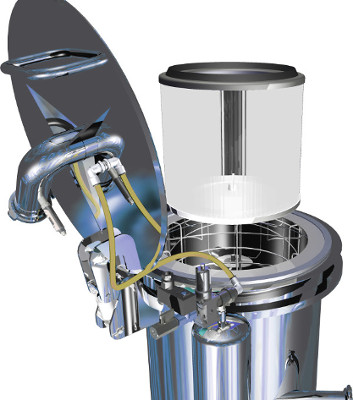
In a pneumatic suction conveying system, a certain degree of vacuum is created inside the tank and the conveying line, such as to suck the product from the intake point or feeding points at atmospheric pressure. While the conveyed material is discharged, the air sucked during conveying is emitted into the atmosphere, from the outlet of the vacuum pump.
This system presents some critical aspects. You need to carefully consider the piping run to prevent constipation or leakage of material, determining discontinuity and the unreliability of the system, thus affecting the dimensioning performed. Another important parameter is the properties of the material itself, for which how it is clogging must be evaluated in order to provide suitable intake points of product, equipped with adjustable inputs of false air.
Not last are to mention the power consumption of the suction systems, in general higher than those of the pressure systems if considered at same desired flow rate of material. This involves the tendency to prefer pneumatic vacuum conveying only in the cases it is strictly necessary, either due to the peculiarities of the material to be conveyed, or to specific plant characteristics.
The problems of fragility of coffee and finished products based on cereals
One of the most important advantages of a dense phase suction conveying is the possibility of making the material moving at low speed inside the piping. If properly designed and manufactured, the system gently sucks the material, as much as possible avoiding shock and stress that a speed too high would cause. It is therefore possible to maintain the properties of the material intact despite its fragility and delicacy.
One of the important applications for which the V-PACK is designed is the conveying of food products in fragile grains as well as ground coffee, mixtures of sugars, additives and flavourings for the coating of comfits. In the pharmaceutical industry V-PACK is appreciated for the conveying of powder media and active principles, with limited dimensions and a high degree of cleanliness.
Other application where the system is of great use is the conveying of oxides and colouring pigments, generally very fine powders which, otherwise conveyed under pressure, would require more complex systems often with support of in-line air, as our M-Jet or PVS.
A similar problem is also found in the handling of products based on cereals.
Carbon black and similar: to prevent the formation of fine powders
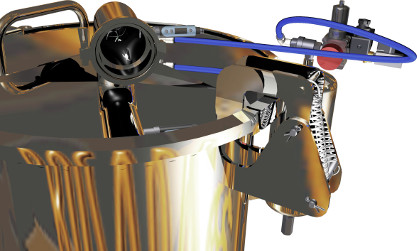
A typical application that requires the use of a V-PACK pneumatic conveying system, or in any case a dense phase vacuum conveying at low speed, regards the atomized powders such as carbon black. This material, constituted by microgranules of powder, tends to break down as a result of impact and friction with the pipes. It follows of additional formation of impalpable powders beyond those already present before conveying. In the production of rubber, the fraction of fine powders must be within standard values to harness the mixing process in systems like Bambury. there is A similar requirement when it is necessary to feed extruders for the production of masterbatch or polymers for coatings of electric cables.
A vacuum conveying is affected a lot by the parameters of flow rate and maximum conveying distance, generally lower than the potential of a solution in pressure.







